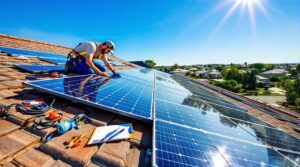Ever wondered if solar panels are your ticket to energy independence? Let's crunch the numbers together! While the initial investment of $15,000-$25,000 might make your wallet wince, think of it as planting a money tree that'll bloom with $31,000-$120,000 in savings over a 25-year span. Most homeowners break even in about 7 years – that's shorter than your smartphone payment plan!
You've got three solar superstars to choose from: the high-performing monocrystalline panels (think luxury sports car), budget-friendly polycrystalline options (reliable family sedan), and adaptable thin-film panels (compact city car). These sun-catching champions convert between 15-22.8% of sunlight into pure, clean electricity for your home.
What about protection? Just like you wouldn't drive without insurance, your solar investment comes wrapped in warranties and insurance coverage. It's not just about slapping panels on your roof – it's about making a smart energy move that keeps giving back. From boosting your property value to shrinking your carbon footprint, solar power is more than just a bright idea – it's a brilliant investment in your future.
Key Takeaways
Wondering if Solar Panels Are Your Next Smart Money Move?
Think of solar panels as your roof’s personal power plant – they’re not just eco-warriors, they’re wallet defenders too! Today’s panels pack quite a punch, converting sunlight to electricity at 15-22. 8% efficiency, and they’ll keep doing their thing for 20-30 years with barely a wink of maintenance. Moreover, the initial investment in rooftop solar panels can lead to significant long-term savings on energy bills, making them an attractive option for many homeowners. The rooftop solar panel advantages extend beyond financial benefits, as they also increase property value and contribute to a cleaner environment by reducing carbon footprints. With government incentives and tax credits available, the transition to solar energy has never been more accessible or appealing.
Let's talk numbers (and they're pretty exciting): While you might gulp at the $15,000-$25,000 upfront investment, imagine pocketing up to $120,000 in savings over 25 years. That's like finding a golden ticket to lower energy bills!
What about protection? You're covered! These sun-catching champions come with rock-solid performance warranties guaranteeing at least 80% output for up to 40 years. Your home insurance has your back too – most policies protect permanently installed panels, though you'll want extra coverage for those standalone installations.
Here's the sweet spot: Your solar investment typically pays for itself in about 7 years. Factor in those juicy federal tax credits and the boost to your property value, and you're looking at a pretty bright financial future. Ready to let your roof earn its keep?
Remember, going solar isn't just about jumping on the green bandwagon – it's about making a smart investment that keeps giving back, just like a fruit tree that produces year after year. Who knew saving the planet could be so rewarding for your bank account?
Understanding Different Types of Solar Panels{auto_h3_3}
A complete understanding of solar panel types is essential for making informed investment decisions in renewable energy. The three primary types of solar panels differ in Panel Materials and Manufacturing Methods, each offering distinct advantages for specific applications.
| Type | Panel Materials | Manufacturing Methods |
|---|---|---|
| Monocrystalline | Pure Silicon Crystal | Single Crystal Growth |
| Polycrystalline | Multiple Silicon Crystals | Fragment Cooling Process |
| Thin-Film | CdTe, CIGS, Amorphous Silicon | Layer Deposition |
The manufacturing process substantially influences panel efficiency and cost. Monocrystalline panels, produced through single crystal formation, achieve the highest efficiency rates but command premium prices. Polycrystalline panels utilize a more economical manufacturing process, resulting in lower costs but reduced efficiency. Thin-film technology employs unique material deposition methods, creating flexible panels suitable for large-scale industrial applications. The selection of panel type depends on specific installation requirements, budget constraints, and desired performance metrics.
Key Benefits of Installing Solar Panels{auto_h3_3}
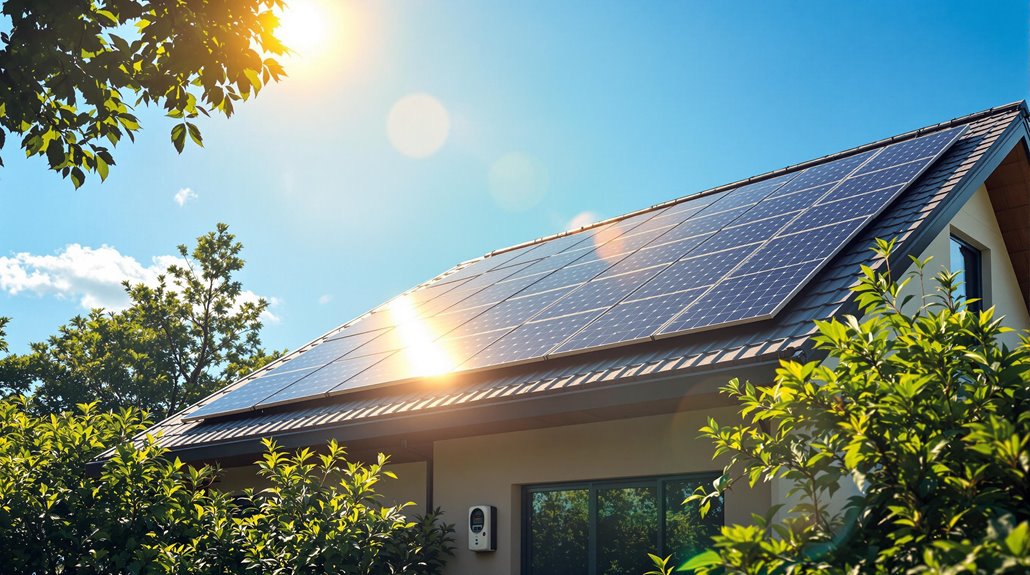
Solar panel installations offer a complete suite of benefits spanning economic, environmental, and functional dimensions. The Economic Advantages include reduced utility bills, increased property values, and potential income from surplus energy sales through net metering. Installation costs are offset by federal tax credits and various financing options, making the initial investment more manageable.
| Benefit Category | Primary Impact | Long-term Value |
|---|---|---|
| Financial | Lower Bills | ROI 5-10 Years |
| Environmental | Carbon Reduction | Sustainable Future |
| Functional | Energy Independence | 20-30 Year Lifespan |
The Environmental Impact of solar adoption extends beyond individual households. By reducing reliance on fossil fuels, solar installations substantially decrease carbon emissions and air pollution. Solar panels contribute to a sustainable energy future while providing reliable power generation. The technology's durability, minimal maintenance requirements, and long operational lifespan of 20-30 years make it a practical choice for homeowners seeking both environmental stewardship and energy independence. Most homeowners can expect installation costs between $15,000 and $25,000, though this investment is often offset by long-term energy savings.
Cost Analysis and Return on Investment{auto_h3_3}

Understanding the financial implications of solar panel installations requires a thorough analysis of multiple cost factors. Initial investment costs range from $3 to $4 per watt, with an 11 kW system averaging $29,360 before federal tax credits. A complete investment analysis reveals that homeowners typically achieve payback within 7.1 years, with potential savings of $31,000 to $120,000 over 25 years.
| System Size | Initial Cost | Post-Credit Cost | Payback Period |
|---|---|---|---|
| 5 kW | $15,000 | $10,592 | 7.1 years |
| 11 kW | $29,360 | $20,552 | 6.8 years |
| 15 kW | $38,000 | $26,600 | 6.5 years |
Payback calculation factors include location, electricity rates, and available incentives. Larger systems benefit from economies of scale, reducing per-watt costs. When combined with increased property values and minimal maintenance requirements, solar installations demonstrate strong long-term financial viability. Insurance coverage and warranties further protect this investment, while financing options make initial costs more manageable.
Solar Panel Efficiency and Performance{auto_h3_3}

Through rigorous testing and technological advancements, modern solar panels achieve efficiency ratings between 15% and 22.8%, with premium manufacturers like SunPower leading the market in conversion capabilities. Performance metrics indicate that efficiency variations exist among different panel types, with monocrystalline panels demonstrating superior conversion rates compared to polycrystalline and thin-film alternatives.
| Panel Type | Efficiency Range | Durability | Best Use Case |
|---|---|---|---|
| Monocrystalline | 15-22% | High | Limited Space |
| Polycrystalline | 15-20% | High | Budget-Conscious |
| Thin-Film | 10-20% | Moderate | Large Areas |
| Premium Models | Up to 22.8% | Very High | Maximum Output |
Environmental factors substantially impact panel performance, with temperature and sunlight exposure being critical variables. While higher temperatures can decrease efficiency, modern panels maintain functionality even in cloudy conditions, though at reduced capacity. Regular maintenance and ideal positioning can help maximize conversion rates, ensuring consistent energy production throughout the system's lifespan.
Essential Installation Requirements and Considerations{auto_h3_3}
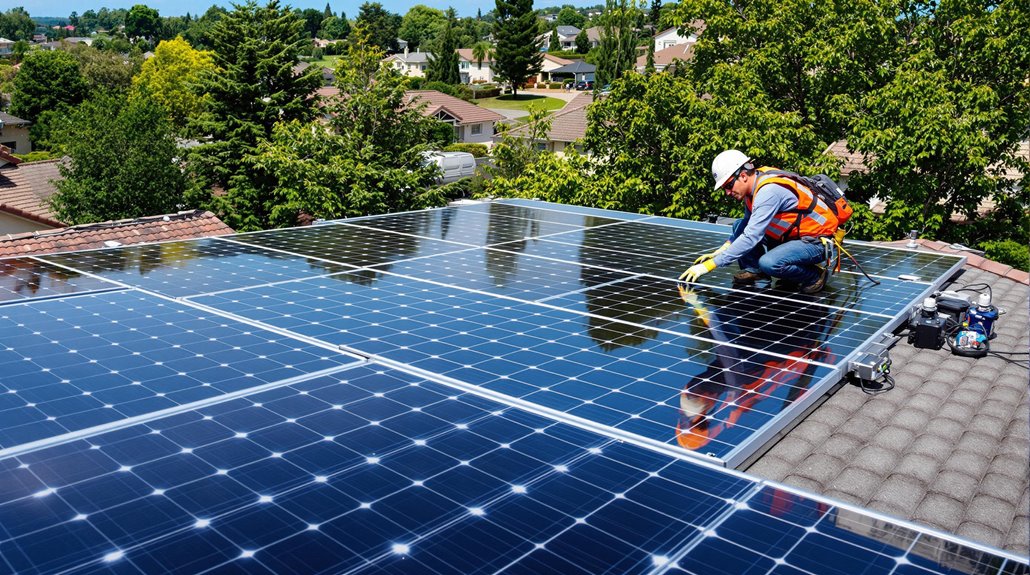
A successful solar panel installation requires meticulous planning and adherence to specific requirements, ranging from proper electrical system compatibility to local building codes. Technical requirements include verifying electrical panel capacity, obtaining necessary permits, and guaranteeing system component compatibility. Installation safety demands proper grounding, appropriate wiring selection, and professional expertise.
| Installation Component | Technical Requirements | Safety Considerations |
|---|---|---|
| Electrical Panel | Sufficient amperage capacity | Professional inspection |
| Roof Structure | Load-bearing assessment | Structural integrity |
| Wiring Systems | Code-compliant materials | Proper conduit protection |
| System Grounding | Bonding specifications | Lightning protection |
Professional installers must possess minimum educational qualifications, typically including a high school diploma and specialized training. Some states mandate additional licensing. The installation process must account for environmental factors such as shading patterns and roof orientation while maintaining strict adherence to local building codes and electrical standards. Proper monitoring systems ensure ongoing performance evaluation and safety compliance.
Solar Panel Insurance and Warranty Coverage{auto_h3_3}
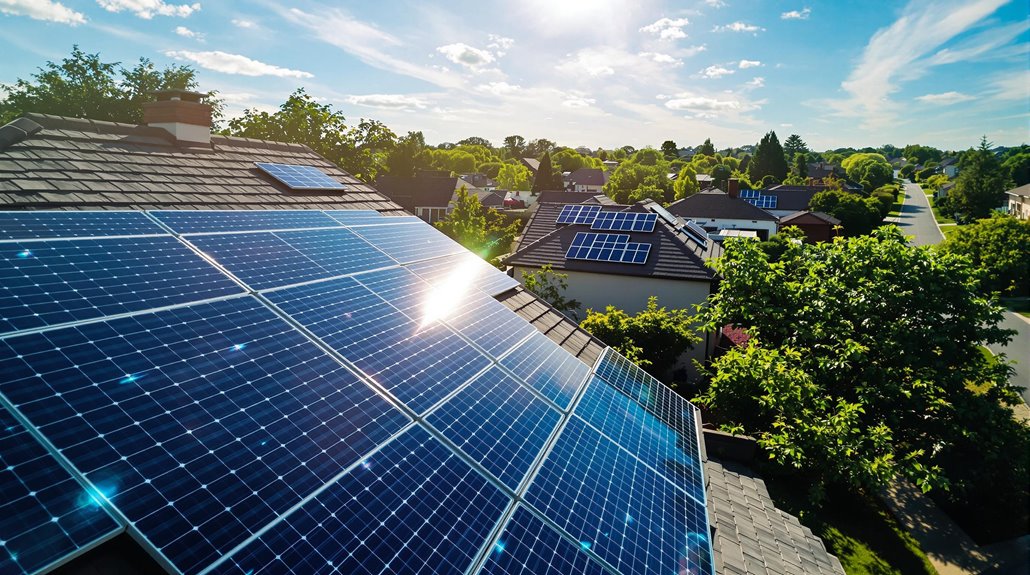
Understanding solar panel insurance and warranty coverage requires analysis of multiple protection layers that safeguard the investment. Standard homeowners insurance typically covers permanently attached solar panels, while additional endorsements may be necessary for ground-mounted systems or specialized coverage needs. The complete protection framework includes manufacturer warranties, workmanship guarantees, and insurance policies that collectively address physical damage, system performance, and liability considerations.
| Coverage Type | Protection Period | Key Features |
|---|---|---|
| Manufacturer Warranty | 20-25 years | Performance degradation, defects |
| Workmanship Guarantee | 5-10 years | Installation issues, roof integrity |
| Equipment Insurance | Annual renewal | Physical damage, theft |
| Performance Warranty | 25-30 years | Power output guarantees |
| Extended Coverage | Variable | Additional protection options |
Coverage Types and Options{auto_h3_3}
Securing appropriate insurance coverage for solar panels requires careful consideration of various protection options available to property owners. Insurance requirements vary based on installation type and coverage limits must align with the system's value. Property owners need to evaluate their existing policies and determine if additional coverage is necessary.
| Coverage Type | Protection Features |
|---|---|
| Home Insurance | Roof-mounted panels, basic perils |
| Other Structures | Ground-mounted, detached systems |
| Additional Riders | Extended protection, specific risks |
| Commercial Plans | Complete business coverage |
Most standard homeowners policies include roof-mounted systems under dwelling coverage, while detached installations typically require separate policies or riders. Commercial properties benefit from specialized coverage options like Equipment Breakdown and CyberRisk protection, ensuring comprehensive security for larger solar investments.
Warranty Length Explained{auto_h3_3}
Solar panel warranties encompass multiple coverage types and durations, with manufacturers typically offering both performance and product guarantees spanning 25 years. The warranty duration varies by component, with performance guarantees certifying minimal power degradation over time. Industry leaders like Maxeon extend performance guarantees up to 40 years, while maintaining strict degradation rates of 0.25% annually.
| Component Type | Standard Warranty Duration |
|---|---|
| Performance | 25-40 years |
| Product | 10-25 years |
| Inverter | 5-10 years |
| Installation | 1-10 years |
Performance guarantees typically certify panels maintain at least 80% of their initial output capacity through the warranty period. Premium manufacturers like Panasonic offer enhanced coverage, guaranteeing performance above 90% for 25 years, demonstrating the industry's commitment to long-term reliability and efficiency.
Claims Process Overview{auto_h3_3}
When homeowners need to file a solar panel claim, handling the process requires careful attention to documentation and procedural requirements. The claims timeline typically involves three distinct phases: initial assessment and documentation, adjuster evaluation, and final approval. Process efficiency depends on thorough documentation, including photos and detailed notes of damage.
| Phase | Requirements | Timeline |
|---|---|---|
| Documentation | Photos, damage notes, system info | 1-2 days |
| Assessment | Adjuster inspection, contractor quotes | 3-5 days |
| Approval | Quote review, final documentation | 7-10 days |
For warranty claims, manufacturers require specific documentation, including invoices and before/after photos. Claims processing typically takes 7-10 business days, with labor reimbursement contingent upon proper service documentation and manufacturer approval.
Benefits Of Public Adjusters For Solar Panel Home Insurance Claims & Questions

Public adjusters serve as valuable intermediaries in solar panel insurance claims by providing expert assessments and maneuvering complex policy requirements.
Their specialized knowledge of solar installations enables accurate damage evaluations and often results in higher claim settlements compared to self-managed claims.
Through their established networks of certified contractors and expertise in insurance regulations, public adjusters streamline the claims process while maintaining strict ethical standards that prohibit referral commissions.
Expertise In Solar Insurance Policies & Claims
Expertise in insurance matters becomes vital when maneuvering the complexities of solar panel coverage and claims. Policy regulations require a thorough understanding of standard coverage parameters, additional riders, and compliance requirements to guarantee maximum protection for solar installations.
Insurance analytics reveal that public adjusters play a fundamental role in maximizing claim settlements through their specialized knowledge and independent assessment capabilities.
These professionals evaluate damage documentation, negotiate with insurers, and facilitate dispute resolution when necessary. Their expertise extends to understanding policy terms, exclusions, and the technical aspects of solar panel systems.
Expert Objective Damage & Theft Assessments
Accurate damage and theft assessments require specialized knowledge to evaluate solar panel installations effectively. Public adjusters employ systematic inspection methods to document and analyze damage types, following established damage criteria that align with insurance policy requirements.
Their expertise extends to understanding both visible physical damage and potential performance degradation.
The assessment process integrates warranty considerations with insurance coverage evaluation, ensuring complete documentation of all compensable damages. Public adjusters utilize their regional expertise to navigate local regulations while conducting thorough evaluations.
Their objective analysis considers multiple factors, including equipment quality, installation standards, and specific risk factors that may impact claim validity. This systematic approach helps maximize claim settlements while ensuring compliance with policy terms and legal requirements.
Streamlined Claim Process
While managing insurance claims for solar panel damage can be complex, a streamlined process substantially improves settlement outcomes and reduces processing time. Claim efficiency hinges on thorough documentation requirements, including detailed photographs and extensive damage reports. Public adjusters play a vital role by leveraging their specialized knowledge of insurance policies and claim procedures.
The process demands meticulous attention to policy terms, coverage limits, and exclusions. Key elements include prompt insurance company notification, implementation of damage mitigation measures, and systematic documentation maintenance.
Insurance brokers can provide valuable guidance on policy updates and endorsements. Regular maintenance records strengthen claims by demonstrating proper system care. Understanding claim eligibility, particularly for leased systems, helps prevent denials and expedites settlements through proper channels.
Higher Claim Payouts & Settlements
Insurance claim payouts substantially increase when public adjusters represent policyholders in solar panel damage cases. Data indicates that catastrophe-related claims can yield settlements up to 747% higher with professional claim advocacy, while non-catastrophe claims also show significant improvements in settlement values.
Public adjusters enhance settlement maximization through exhaustive property valuation, including both home and solar panel assessments. Their expertise guarantees accurate consideration of solar installation value, energy efficiency benefits, and property improvements in claim calculations.
While claims may take longer to settle with adjuster representation, the increased payout typically justifies the extended timeline. This thorough approach particularly benefits homeowners with solar installations, as these systems add substantial value to properties and require specialized knowledge for proper damage assessment and valuation.
Incredible & None-Biased Network Of Trusted Solar, Roofing, & Home Contractors (Adjusters Never Receive A Comission For Refferals, It's Actually Against The Law)
Professional public adjusters maintain extensive networks of vetted solar installers, roofing specialists, and home contractors to guarantee quality repairs for their clients.
Through rigorous network verification processes, adjusters verify their contractor partnerships meet strict quality standards and industry certifications.
- Contractors undergo thorough background checks, license verification, and performance reviews before joining adjuster networks
- Legal regulations prohibit adjusters from receiving commissions or kickbacks from contractor referrals, guaranteeing unbiased recommendations
- Network members must maintain current certifications in solar panel installation, roofing systems, and specialized equipment handling
This systematic approach to contractor selection protects homeowners while verifying compliance with local building codes and manufacturer specifications.
The established network facilitates efficient claim resolution and proper system restoration, ultimately safeguarding the homeowner's investment in solar technology.
About The Public Claims Adjusters Network (PCAN)
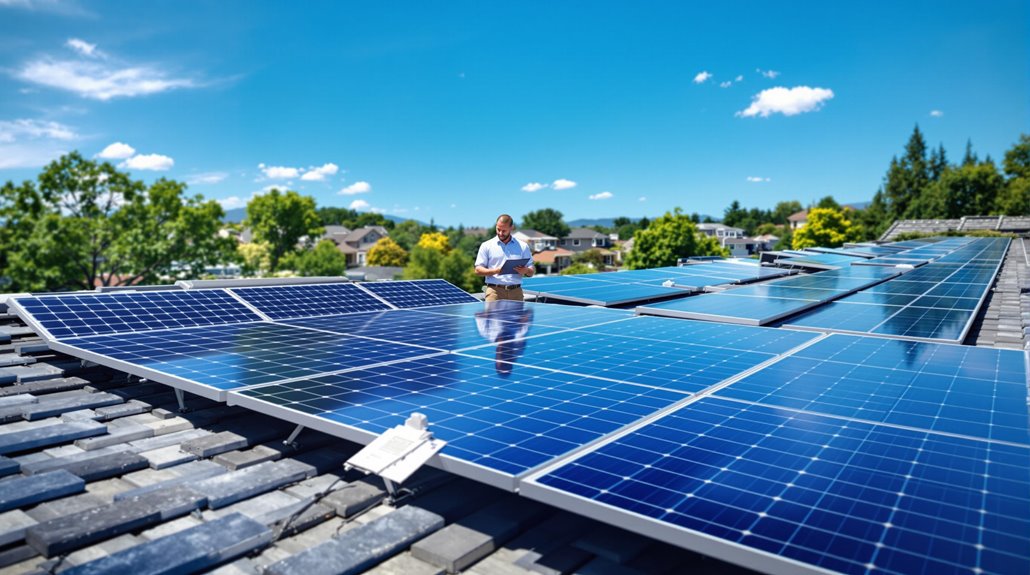
Despite extensive research, limited public information exists about The Public Claims Adjusters Network (PCAN).
While specific details regarding its Network Structure remain undisclosed, public adjusters typically operate within established professional frameworks to serve policyholders in insurance claims processes.
Member Benefits of organizations like PCAN generally include access to shared resources and professional expertise in claims adjustment.
Licensed public adjusters within such networks conduct thorough policy assessments, document property damage, and negotiate settlements with insurance companies on behalf of policyholders. Their independent status guarantees unbiased representation, as they work separately from insurance providers.
Public adjusters operate under strict licensing requirements in 45 states and Washington D.C., with fees often regulated as a percentage of claim settlements.
Their expertise encompasses complete policy review, accurate damage assessment, and strategic negotiation to maximize claim benefits for their clients.
Frequently Asked Questions
How Do Solar Panels Affect My Roof's Structural Integrity?
Solar panels impact roof structures through additional load distribution requirements. Proper mounting systems and engineering assessments guarantee structural integrity while managing the 3-5 pounds per square foot weight increase.
Can I Install Solar Panels on a Rental Property?
Installing solar panels on rental properties requires explicit landlord agreements, as tenants lack property modification rights. Property owners maintain authority over structural alterations and must approve installations through formal documentation.
What Happens to Solar Panels During Power Outages?
Like a circuit breaker tripping for safety, solar panels automatically shut down during outages to protect utility workers. Systems with battery backup can continue powering homes independently despite losing grid connection.
How Do Extreme Weather Conditions Impact Solar Panel Performance?
Temperature fluctuations substantially affect solar panel efficiency, with heat reducing output by 0.5% per degree above ideal range. Weather resistance determines durability against rain, hail, snow, and wind impacts.
Can Solar Panels Be Recycled at the End of Their Lifespan?
Like phoenixes rising from ashes, solar panels find new life through diverse recycling methods. Advanced material recovery processes can reclaim up to 90% of components, including glass, silicon, and metals.
References
- https://www.solarreviews.com/blog/pros-and-cons-of-monocrystalline-vs-polycrystalline-solar-panels
- https://www.investopedia.com/articles/mortgages-real-estate/10/solar-power-home.asp
- https://www.youtube.com/watch?v=5M8hEVThXYE
- https://www.solarreviews.com/blog/dont-buy-solar-panels
- https://8msolar.com/types-of-solar-panels/
- https://freedomsolarpower.com/blog/are-solar-panels-worth-it
- https://aurorasolar.com/blog/solar-panel-types-guide/
- https://www.energysage.com/solar/types-of-solar-panels/
- https://us.qcells.com/blog/are-solar-panels-worth-it-a-comprehensive-analysis-of-solar-energy/
- https://www.energy.gov/energysaver/articles/5-benefits-residential-solar







